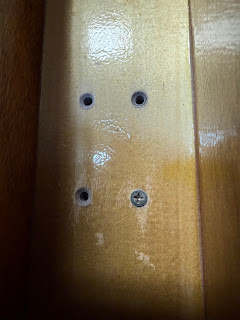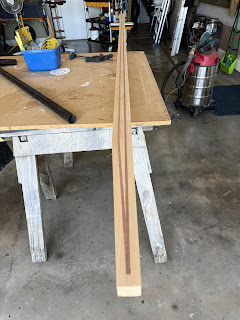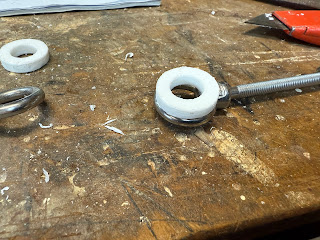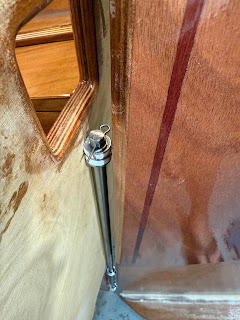Time to mill up some Queensland Hoop pine. This timber is straight grained and has no knots making it perfect for the mast.
I was fortunate enough to have a 5m length of timber thus eliminating the need to scarf timbers.
With my trusty triton workbench saw I milled up the 4 staves.
The two fore & aft staves measuring18mm x 57mm x 4877mm were cut slightly oversize. Then the two side staves measuring 18mm x 76mm x 4877mm were cut. The four sections were put through a thicknesser to clean up to the correct thickness.
Time to mark out the curves on the staves using the full-size drawings on page 3.
I started with the 18mm x 57mm fore & aft staves. The distances for the widths were plotted and two cut lines drawn along the length.
I used a circular saw to cut the shape and cleaned up to the line with a hand plane.
The same method was used for the 18mm x 76mm side staves however the taper is only on the forward edge as the aft edge is straight.
Using the bench saw I cut the first notches for the rabbets that secure the fore & aft staves. The saw blade was 9mm above the bench and 18 mm out from the fence. The second cut was 18 mm above the bench and 9mm out from the fence.
Careful measurements are required to ensure the width of the saw blade is included.
This shot shows the rabbets or notches, the two outside staves are the mast sides, and the two insides are the fore & aft staves, this is a bottom view.
And this is a top view.
























































